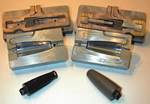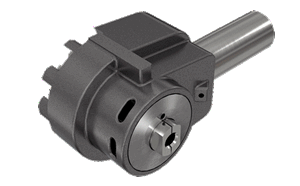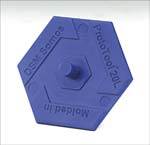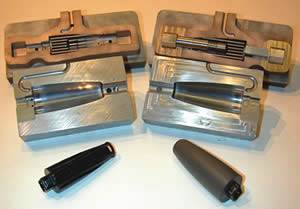The Impact of Rapid Prototyping On the Plastics Industry
Examining the level of acceptance and use of additive fabrication technology in the development of injection molded components.
A few months ago, I was asked to make a presentation at a technical conference on rapid prototyping and injection molding. I began to assemble the kind of presentation that we all have seen several times over the last decade or more; discussing the various types of additive systems and how they can be used in the development of injection molded parts. As I was put-ting it together; however, I began to wonder what impact additive technology has really had on the development of injection molded components.
Like CAD and finite element analysis, additive fabrication systems are product development tools. By using such tools, we hope to improve our ability to develop products. There is no question that both CAD and finite element analysis have had a significant impact on the development of injection molded parts, so much so that it is hard to imagine how we developed products without them. But how effective a tool is additive fabrication? Does it really enable us to develop better designs faster and less expensively than we could without it?
Additive System Stats
Since the first additive system was installed at Baxter Healthcare in December 1987, the additive fabrication industry has grown tremendously. Consider these statistics from Wohlers Report 2006:
- More than 18,000 additive fabrication systems have been in-stalled worldwide, with more than 7,000 in the United States1
- More than 30 companies manufacture such systems, four of whom have sold more than 1,000 systems each, and one has sold more than 5,000 total2
- Most large manufacturers own at least one system and many own several
- More than 400 companies provide additive fabrication services, with more than 200 of them in the United States3
It certainly would appear that additive fabrication has been tremendously successful. However, do a large number of systems sold mean that additive fabrication is an effective product development tool?
Not necessarily. To illustrate, consider another tool that most of us are familiar with, this one for cooking. The George Foreman grill is the most successful appliance in history, selling more than 55 million units. Its popularity has not only made George Foreman a very wealthy man, it has spawned the creation of similar appliances from other manufacturers. If we include those appliances, the total is probably tens of millions units higher. With that many units sold, it would be safe to say that more than 20 percent of U.S. households own one.
While it is obviously a huge commercial success, has the availability of this tool had any impact on the process of preparing food? A good indicator of its value is the frequency of use. Do owners use the appliance to prepare a significant percentage of their meals? Or was it a curiosity that now spends most of its time sitting in a cabinet and is pulled out a few times a year? While it may be very good at some types of cooking, it is doubtful that it is used in the preparation of even one percent of meals. Consequently, it would appear that in spite of its tremendous commercial success, the George Foreman Grill does not provide significant value in the cooking process. If it did, it would be used much more frequently than it is. Consequently, in spite of huge sales numbers, the value of the George Foreman grill as a cooking tool is questionable.
Survey Says
Are additive fabrication systems in a similar situation; large sales but limited value as a product development tool? Are additive fabrication systems just a very expensive George Foreman grill? To find out, I decided to do an unscientific survey. I called a number of companies who design hundreds of injection molded parts each year and asked them a simple question:
“In your opinion, what percentage of your company’s new designs of parts that will be injection molded is prototyped using an additive process?”
| Chart 1 | ||
| Company |
Product Type | Percent |
| Bose |
Audio Equipment | 95 % |
| HP |
Inkjet Printers | >95 % |
| MASCO |
Varied | 80 % |
| SC Johnson |
Consumer Products | 100 % |
| HP |
Laser Printer | >90 % |
| Allen Bradley |
Electronic Controls | > 90% |
| Chrysler |
Automotive | 85 % |
| Approximate | Average | 90.7 % |
| What percentage of your company’s new designs of parts that will be injection molded is prototyped using an additive process? Charts courtesy of Tom Mueller. | ||
I didn’t ask for data to support their answers, but in each case I personally knew the person I spoke with and knew that they were in as good a position as anyone in their company to estimate the answer. The results were a little surprising (see Chart 1).
The approximate average (approximate because we don’t know the relative number of parts designed by each company) is about 91 percent. In other words, this product development tool is used in more than 90 percent of new product development efforts. This is an extraordinarily high level of acceptance by the manufacturing industry. The inescapable conclusion is that AF technology provides a very significant benefit in the development of injection molded components.
To put this in perspective, if the George Foreman grill had the same level of acceptance, 91 percent of your meals would be cooked on one.
It also is surprising that this level of acceptance was accomplished in a relatively short period of time. While 18 years may not seem short, in the sense of technology adoption, it is extraordinarily fast. Many of the most significant technological innovations, including the light bulb, the automobile, and the xerography process, took more than 25 years to find widespread use and even then were nowhere near the level of acceptance of additive fabrication.4
Consider these other technologies, all of which are now nearly universally used in the development of injection molded components, and my estimate of their penetration 18 years after they were introduced (see Chart 2).
| Chart 2 | ||
| Technology |
Introduced | Penetration After 18 Yrs |
| Injection Molding |
1940s | < 30% |
| Computer Aided Design |
1970s | < 50% |
| Personal Computers |
1970s | < 50% |
| CNC Machining | 1960s | < 30% |
| Technologies now nearly universally used in the development of injection molded components, and their estimated penetration 18 years after they were introduced. | ||
Analyzing the Data
Clearly, additive processes have been adopted much more rapidly than these other technologies. This further reinforces the conclusion that additive fabrication technologies provide significant value in the product development process.
Determining Value
These results beg two questions. First, exactly what value does additive fabrication provide in the development of injection molded components that has driven such a high level of use so quickly?
We can speculate about how and where the use of additive fabrication adds value in the development of injection molded parts. Wohlers Report lists 12 application areas for additive fabrication, eight of which apply to the development of injection molded components. However, the relative value provided by the applications is not clear. We can get a clue by examining how users vote with their dollars. Wohlers Report states that 3,609 additive fabrication systems were sold in 2005. Interestingly, 2,528 of those systems, or 70 percent, were a class of systems called 3-D printers. In general, these are relatively low-cost systems that do not have the capability of mainstream additive fabrication systems in terms of accuracy, surface finish and material properties. However, they can make a physical model of a design, generally referred to as a concept model, very quickly and at low cost.
Given that sales of 3-D printers so outnumber that of mainstream RP systems, it would be reasonable to assume that the greatest value in product development is provided by those applications that can be done by 3-D printers. Of the eight applications listed by Wohlers Report that apply to the development of injection molded components, five can be done by 3-D printers, including: 1. visual aids for engineering, 2. visual aids for toolmakers, 3. requesting quotes, 4. presentation models and 5. ergonomic studies.
While these applications deal with different aspects of the development process, they all fundamentally involve communicating a design to others. Communicating a design has historically been a difficult task. Engineering drawings may be an unambiguous way to document design details, but as a means of quickly communicating a concept to others, especially non-technical people, it falls far short. Even for an engineer or a toolmaker, people used to looking at engineering drawings, it may take several minutes of looking at the various views of a drawing before they can accurately visualize a design in their minds. People without that experience may never be able to. A shaded image on a computer screen helps but lacks scale. Nothing beats a model part for quickly and accurately communicating the intricacies of a design to all parties involved.
3-D printers provide a means to create models of new designs in a few hours and at very low cost. It may well be that the primary reason for the very widespread use of additive fabrication systems in the development of injection molded parts is its ability to create low-cost models to communicate the design quickly and unambiguously.
Determining Market Saturation
The second question raised is whether the market is reaching saturation. If more than 90 percent of new injection molded parts are already prototyped using an additive process, how many more systems can we sell? Will sales to fall off dramatically over the next few years?
It is tempting to conclude that the market should be slowing considerably. However, sales data does not support such a conclusion. Sales of 3-D printers have grown considerably in the last few years and 2005 was the best year ever for all but one manufacturer. In fact, more additive fabrication systems of all types were sold in 2005 than in any previous year by a wide margin.
This data is seemingly contradictory. How can sales be increasing as we are rapidly closing in on additive fabrication systems being used on all injection molded part designs?
While it could be that the number of injection molded parts designed every year is increasing, it is far more likely that the average number of additive fabrication parts per design is increasing. Many companies now use low-cost, 3-D printers to build physical models for several candidate designs before the final design is selected. It is becoming commonplace for models to be sent along with drawings and CAD files to tooling vendors in the quoting process. As material properties have improved, multiple prototypes are being built in functional materials for testing prior to building tooling. As a result of these and similar changes in the way additive fabrication parts are used, we are now making many parts per design instead of one or two. As the number of parts per design increases, we will need more and more additive fabrication systems to create them.
Continuing Trends
It is likely that these trends will continue over the next several years. I would expect that the percentage of new designs which use additive fabrication in development to continue to increase and that sales of additive fabrication systems will continue to grow for a number of reasons:
- The price of 3-D printers continues to fall, reducing the price of concept models. The cost of making additional concept models will be insignificant compared to the total cost of product development, making it easier to evaluate a greater number of alternative designs.
- As materials continue to improve and more closely simulate injection molded plastics, the number of functional prototypes built will increase significantly, allowing more and more design issues to be resolved prior to the build of tooling.
- Also, as materials improve, additive systems will be used to build initial production parts allowing companies to get prod-ucts to market while waiting for production tooling to be built.
- As materials reach production quality, the market for very low-volume production will increase rapidly, greatly increasing the average number of parts per design built.
I believe the next 18 years could be every bit as interesting as the last.
References
1,2,3 Wohlers Report 2006, Terry Wohlers.
4 Rapid Prototyping and Manufacturing: Fundamentals of Stereolithography, Paul F. Jacobs, PhD, 1992 McGraw Hill.
![]()
Related Content
A 3D Printing Retrospective
A personal review of the evolution of 3D printing in moldmaking throughout the past 25 years.
Read MoreMold Materials, 3D Printing Technologies for Next-Gen Moldmaking
As moldmaking advances, so too do the materials and processes involved in their efficient production, including these latest mold materials and 3D printing technologies.
Read MoreMMT Chats: The Connection Between Additive Manufacturing Education and ROI
This MMT Chat continues the conversation with Action Mold and Machining, as two members of the Additive Manufacturing team dig a little deeper into AM education, AM’s return on investment and the facility and equipment requirements to implement AM properly.
Read More3D Printing Enables Better Coolant Delivery in Milling Operations
Just like 3D printing enabled conformal cooling channels in molds, additive manufacturing is now being used to optimize coolant delivery in cutting tools.
Read MoreRead Next
Rapid Tooling Via Stereolithography Gets a Closer Look
Industry roundtable reports initial findings.
Read MoreDirect Metal Laser Sintering and Tooling
The applications, benefits and limitations of direct metal laser sintering for mold manufacture.
Read More


















